Murals seen in Donggar and Piyang grottoes in Tibet
 0 Comment(s)
0 Comment(s) Print
Print E-mail Xinhua, May 30, 2023
E-mail Xinhua, May 30, 2023
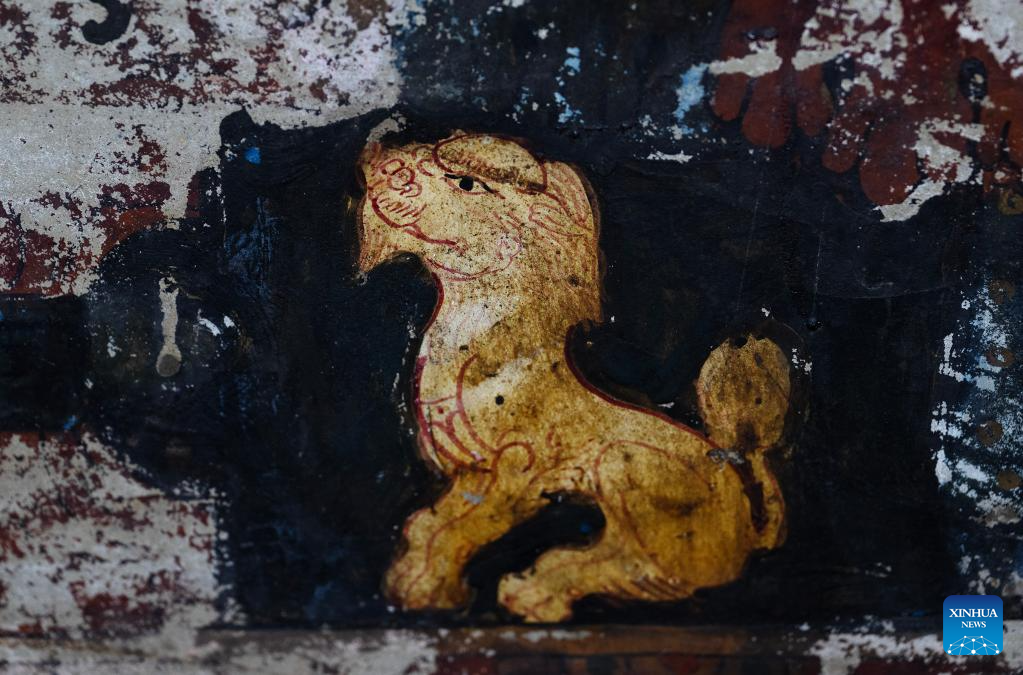
This photo taken on May 26, 2023 shows a lion in a mural in a grotto in Zanda County of Ngari Prefecture, southwest China's Tibet Autonomous Region. Known as the Donggar and Piyang grottoes, the 1,000-year-old caverns in the Tibet Autonomous Region's Ngari Prefecture hold one of the world's greatest collections of Tibetan Buddhist murals.
Frescoes that are currently open to the public mainly depict Buddhas, Bodhisattvas and other deities, but also feature animals that are not native to Ngari. (Xinhua/Fei Maohua)
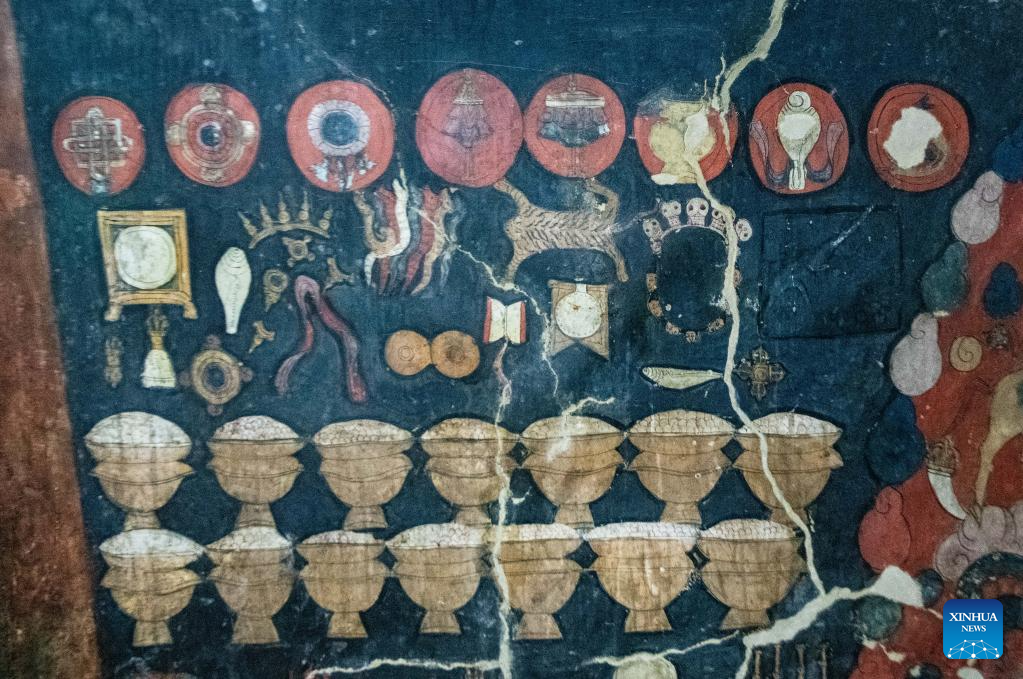
This photo taken on May 26, 2023 shows part of a mural in a grotto in Zanda County of Ngari Prefecture, southwest China's Tibet Autonomous Region. Known as the Donggar and Piyang grottoes, the 1,000-year-old caverns in the Tibet Autonomous Region's Ngari Prefecture hold one of the world's greatest collections of Tibetan Buddhist murals.
Frescoes that are currently open to the public mainly depict Buddhas, Bodhisattvas and other deities, but also feature animals that are not native to Ngari. (Xinhua/Jigme Dorje)

This photo taken on May 26, 2023 shows part of a mural in a grotto in Zanda County of Ngari Prefecture, southwest China's Tibet Autonomous Region. Known as the Donggar and Piyang grottoes, the 1,000-year-old caverns in the Tibet Autonomous Region's Ngari Prefecture hold one of the world's greatest collections of Tibetan Buddhist murals.
Frescoes that are currently open to the public mainly depict Buddhas, Bodhisattvas and other deities, but also feature animals that are not native to Ngari. (Xinhua/Fei Maohua)

This photo taken on May 26, 2023 shows part of a mural in a grotto in Zanda County of Ngari Prefecture, southwest China's Tibet Autonomous Region. Known as the Donggar and Piyang grottoes, the 1,000-year-old caverns in the Tibet Autonomous Region's Ngari Prefecture hold one of the world's greatest collections of Tibetan Buddhist murals.
Frescoes that are currently open to the public mainly depict Buddhas, Bodhisattvas and other deities, but also feature animals that are not native to Ngari. (Xinhua/Fei Maohua)
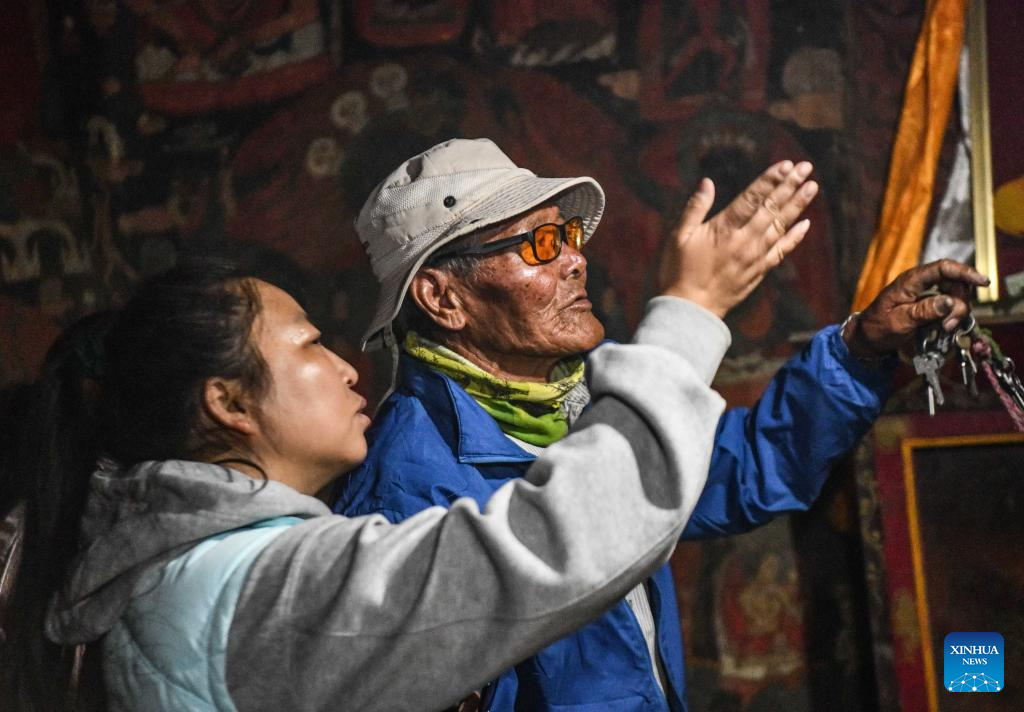
Rigzin Wangzhab, who has been guarding the Donggar and Piyang grottoes for more than 20 years, explains to a tourist as they look at the mural in a grotto in Zanda County of Ngari Prefecture, southwest China's Tibet Autonomous Region, May 26, 2023. Known as the Donggar and Piyang grottoes, the 1,000-year-old caverns in the Tibet Autonomous Region's Ngari Prefecture hold one of the world's greatest collections of Tibetan Buddhist murals.
Frescoes that are currently open to the public mainly depict Buddhas, Bodhisattvas and other deities, but also feature animals that are not native to Ngari. (Xinhua/Jigme Dorje)
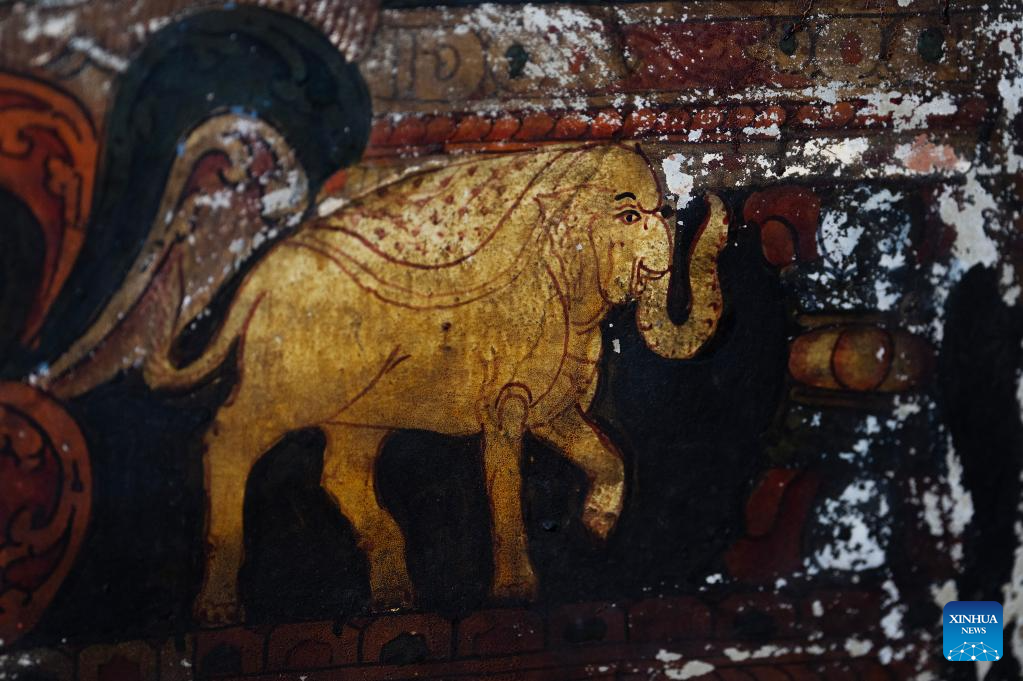
This photo taken on May 26, 2023 shows an elephant in a mural in a grotto in Zanda County of Ngari Prefecture, southwest China's Tibet Autonomous Region. Known as the Donggar and Piyang grottoes, the 1,000-year-old caverns in the Tibet Autonomous Region's Ngari Prefecture hold one of the world's greatest collections of Tibetan Buddhist murals.
Frescoes that are currently open to the public mainly depict Buddhas, Bodhisattvas and other deities, but also feature animals that are not native to Ngari. (Xinhua/Fei Maohua)
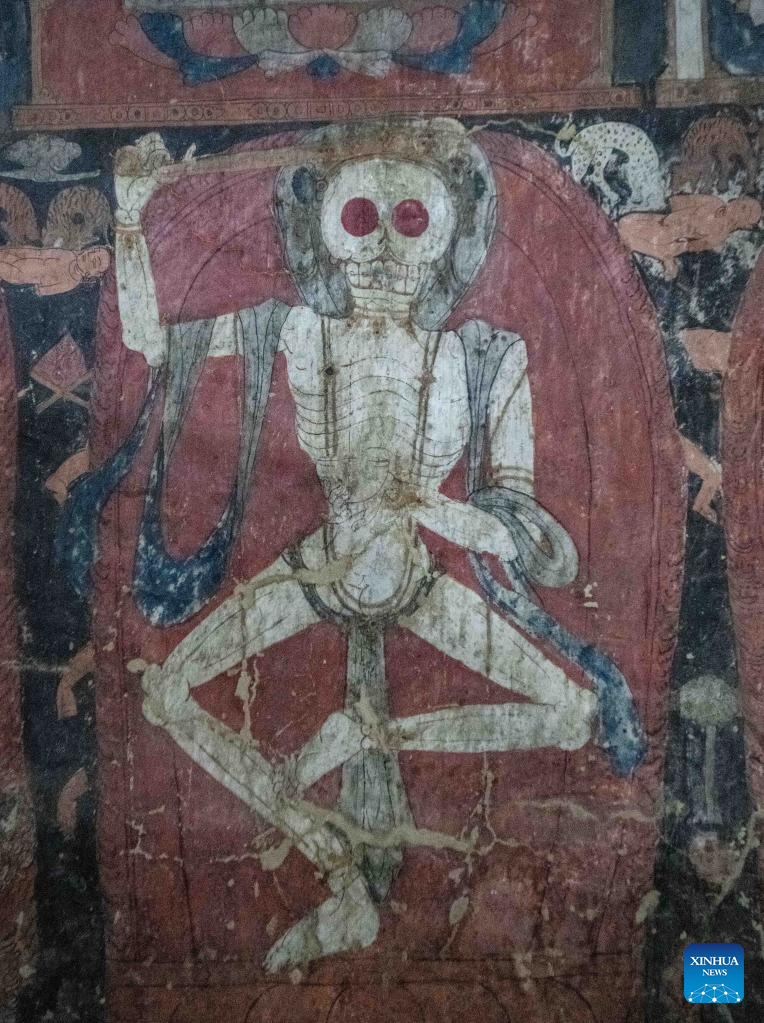
This photo taken on May 26, 2023 shows a skeleton in a mural in a grotto in Zanda County of Ngari Prefecture, southwest China's Tibet Autonomous Region. Known as the Donggar and Piyang grottoes, the 1,000-year-old caverns in the Tibet Autonomous Region's Ngari Prefecture hold one of the world's greatest collections of Tibetan Buddhist murals.
Frescoes that are currently open to the public mainly depict Buddhas, Bodhisattvas and other deities, but also feature animals that are not native to Ngari. (Xinhua/Jigme Dorje)

This aerial photo taken on May 26, 2023 shows the Piyang grottoes in Zanda County of Ngari Prefecture, southwest China's Tibet Autonomous Region. Known as the Donggar and Piyang grottoes, the 1,000-year-old caverns in the Tibet Autonomous Region's Ngari Prefecture hold one of the world's greatest collections of Tibetan Buddhist murals.
Frescoes that are currently open to the public mainly depict Buddhas, Bodhisattvas and other deities, but also feature animals that are not native to Ngari. (Xinhua/Jigme Dorje)
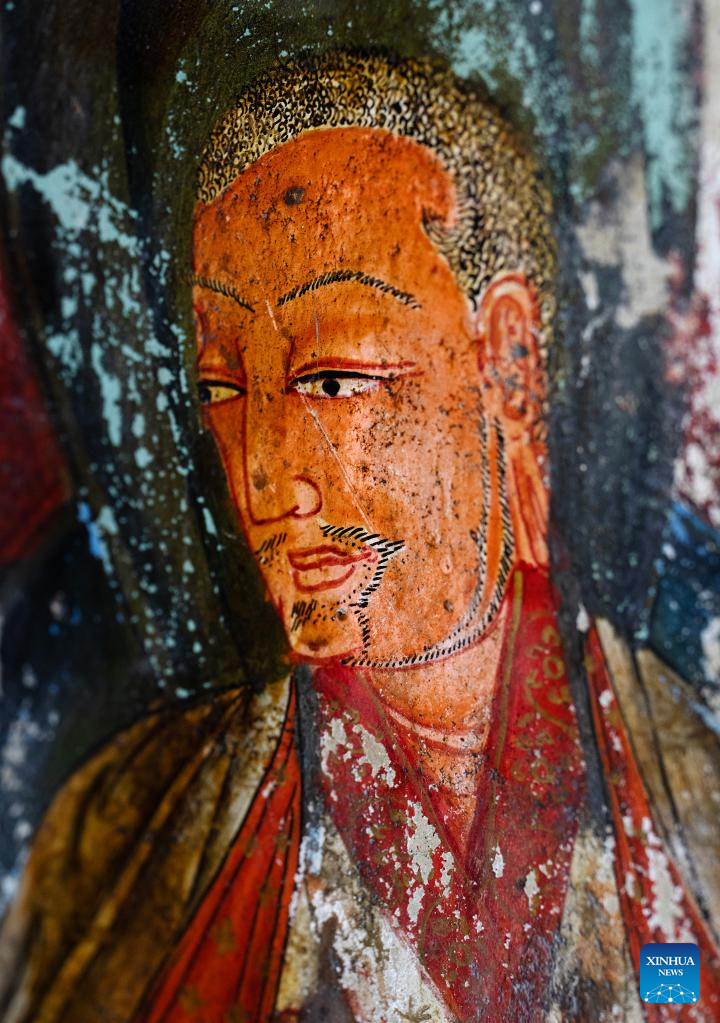
This photo taken on May 26, 2023 shows part of a mural in a grotto in Zanda County of Ngari Prefecture, southwest China's Tibet Autonomous Region. Known as the Donggar and Piyang grottoes, the 1,000-year-old caverns in the Tibet Autonomous Region's Ngari Prefecture hold one of the world's greatest collections of Tibetan Buddhist murals.
Frescoes that are currently open to the public mainly depict Buddhas, Bodhisattvas and other deities, but also feature animals that are not native to Ngari. (Xinhua/Fei Maohua)
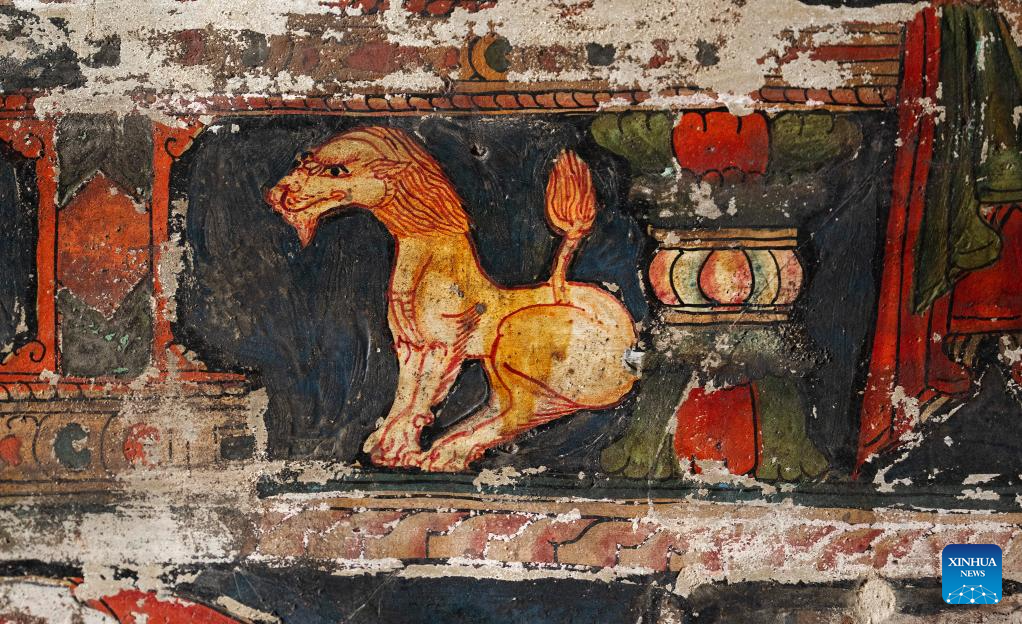
This photo taken on May 26, 2023 shows a lion in a mural in a grotto in Zanda County of Ngari Prefecture, southwest China's Tibet Autonomous Region. Known as the Donggar and Piyang grottoes, the 1,000-year-old caverns in the Tibet Autonomous Region's Ngari Prefecture hold one of the world's greatest collections of Tibetan Buddhist murals.
Frescoes that are currently open to the public mainly depict Buddhas, Bodhisattvas and other deities, but also feature animals that are not native to Ngari. (Xinhua/Fei Maohua)
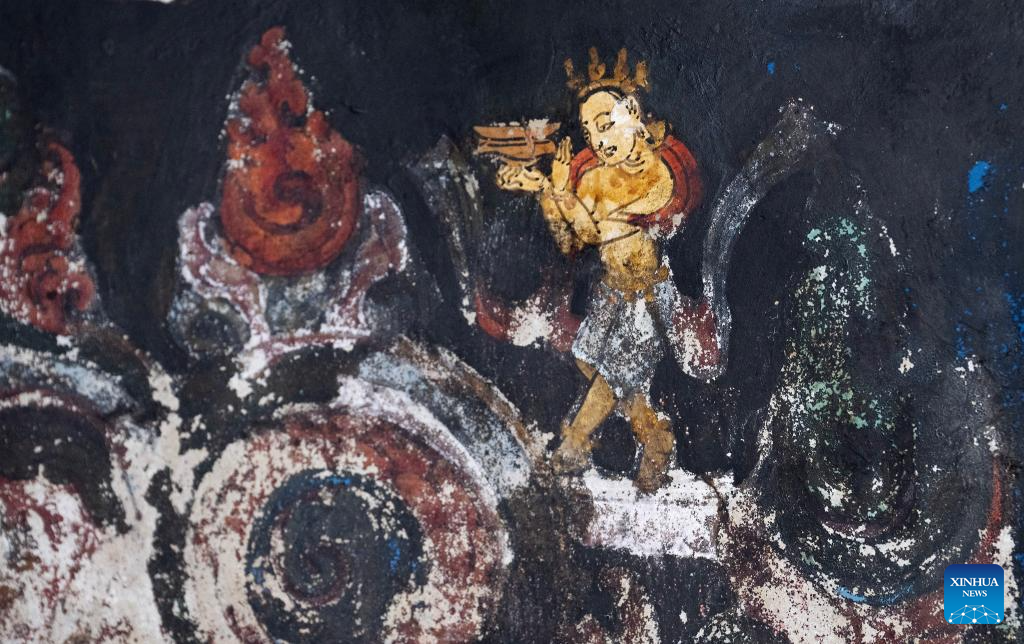
This photo taken on May 26, 2023 shows part of a mural in a grotto in Zanda County of Ngari Prefecture, southwest China's Tibet Autonomous Region. Known as the Donggar and Piyang grottoes, the 1,000-year-old caverns in the Tibet Autonomous Region's Ngari Prefecture hold one of the world's greatest collections of Tibetan Buddhist murals.
Frescoes that are currently open to the public mainly depict Buddhas, Bodhisattvas and other deities, but also feature animals that are not native to Ngari. (Xinhua/Fei Maohua)
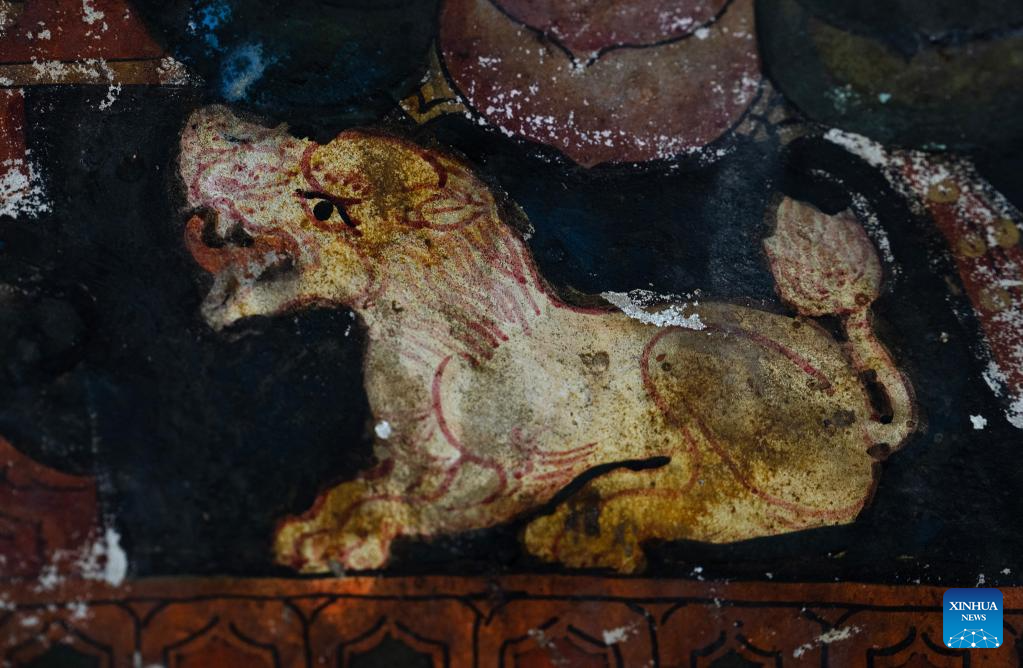
This photo taken on May 26, 2023 shows a lion in a mural in a grotto in Zanda County of Ngari Prefecture, southwest China's Tibet Autonomous Region. Known as the Donggar and Piyang grottoes, the 1,000-year-old caverns in the Tibet Autonomous Region's Ngari Prefecture hold one of the world's greatest collections of Tibetan Buddhist murals.
Frescoes that are currently open to the public mainly depict Buddhas, Bodhisattvas and other deities, but also feature animals that are not native to Ngari. (Xinhua/Fei Maohua)
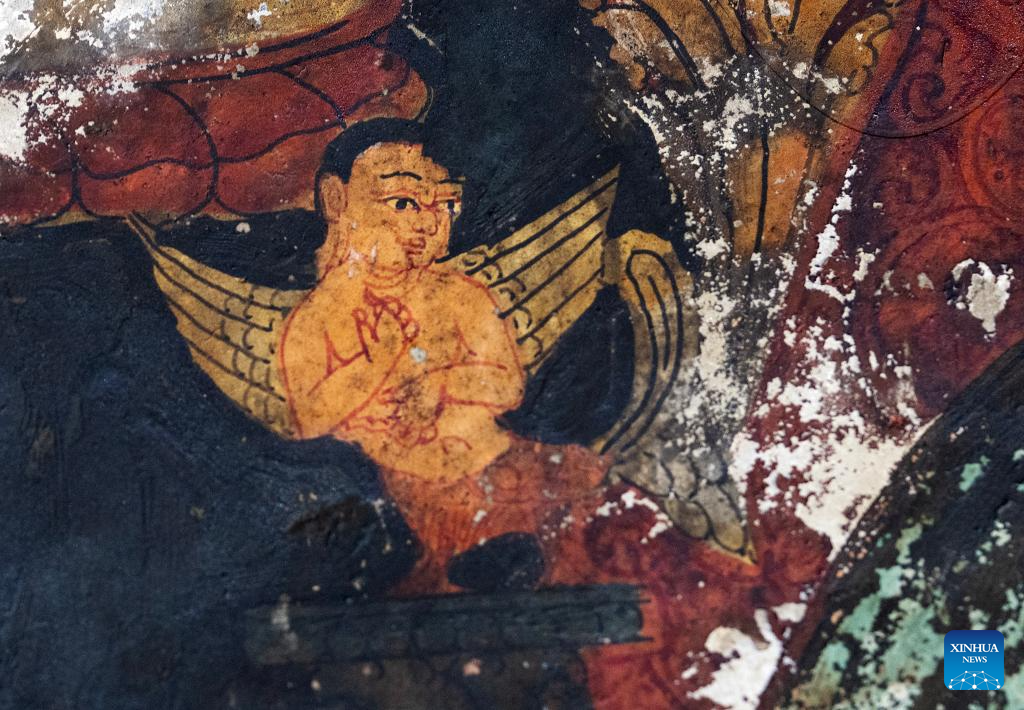
This photo taken on May 26, 2023 shows part of a mural in a grotto in Zanda County of Ngari Prefecture, southwest China's Tibet Autonomous Region. Known as the Donggar and Piyang grottoes, the 1,000-year-old caverns in the Tibet Autonomous Region's Ngari Prefecture hold one of the world's greatest collections of Tibetan Buddhist murals.
Frescoes that are currently open to the public mainly depict Buddhas, Bodhisattvas and other deities, but also feature animals that are not native to Ngari. (Xinhua/Fei Maohua)


